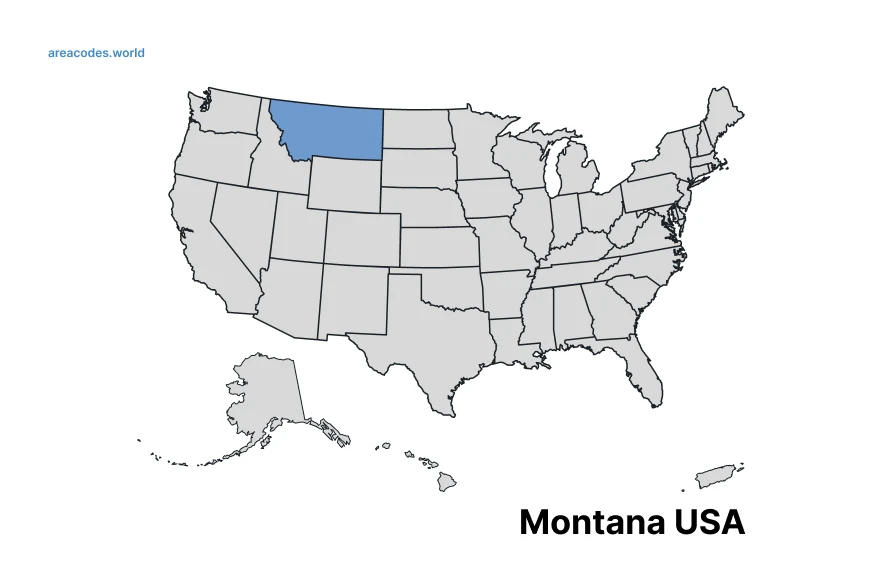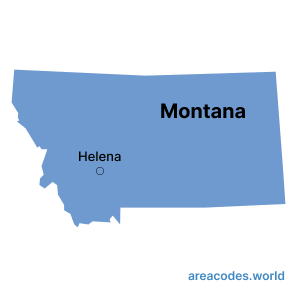Montana Area Code
Montana area codes, like the primary 406 code, are numerical prefixes used in telephone numbers to identify specific geographic regions within the state of Montana. They are essential for routing calls and pinpointing the location of phone numbers within Montana. Montana did not have any overlay area codes, maintaining a single area code for the entire state.
| State | Montana |
| State Abbreviation: | MT |
| State Nickname: | Treasure State Equality State |
| Capital City | Helena |
| Area Codes | 406 |
| Timezone | Mountain Time Zone (MT) |


What time zone is Montana?
Montana's area codes primarily follow the Mountain Time Zone (MT), UTC-7:00 during Standard Time, and UTC-6:00 during Daylight Saving Time (MDT). Montana observes DST, typically moving its clocks forward by one hour in the spring and back by one hour in the fall to maximize daylight in the evenings.
Note that the start and end dates of daylight saving time can change
History
Montana's area code history is characterized by its enduring association with the number 406. Since the inception of the North American Numbering Plan in 1947, the state has proudly carried the area code 406. Over the years, it has come to symbolize Montana's rugged beauty, expansive wilderness, and a strong sense of community. Despite the growing population and technological advancements, the 406 area code remains a cherished emblem of the Treasure State, connecting its residents and businesses while preserving its unique identity.
All Area Codes in Montana
This table provides a quick overview of all area codes, their locations, and some historical context for each.
| Area Code | Location | History and Details |
|---|---|---|
| 406 | Montana | The primary and only area code for the entire state of Montana. |
Largest Cities in Montana with area codes
Quick overview of large cities, their area codes, and some historical context for each in Montana.
| Name | Area Code | History and Details |
|---|---|---|
| Billings | 406 | The largest city in Montana, known for its vibrant community, outdoor activities, and economic significance. |
| Missoula | 406 | A cultural and educational hub with access to natural beauty, including mountains and rivers. |
| Great Falls | 406 | Known for the Great Falls of the Missouri River and its military history. |
| Bozeman | 406 | Home to Montana State University and a gateway to Yellowstone National Park. |
| Butte | 406 | Known for its rich mining history and unique architecture. |
| Helena | 406 | The state capital with a historic downtown area and outdoor recreational opportunities. |
| Kalispell | 406 | Located near Glacier National Park, offering stunning natural beauty. |
| Havre | 406 | Known for its railway history and cultural attractions. |
| Anaconda | 406 | Home to historic sites and outdoor recreational opportunities. |
| Miles City | 406 | Known for its western heritage and annual bucking horse sale. |
| Belgrade | 406 | Located near Bozeman and known for its small-town charm. |
| Livingston | 406 | Gateway to Yellowstone National Park and known for its art community. |
| Whitefish | 406 | A resort town near Glacier National Park with outdoor recreational activities. |
| Lewistown | 406 | Known for its central location and outdoor opportunities. |
| Sidney | 406 | Located in northeastern Montana, known for its agriculture and energy industries. |